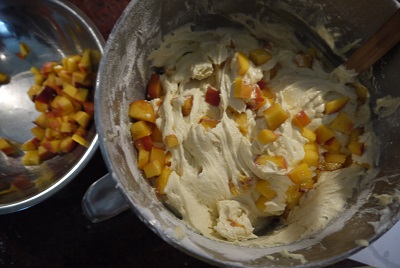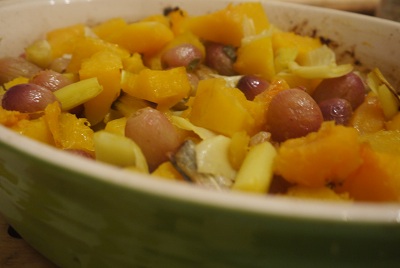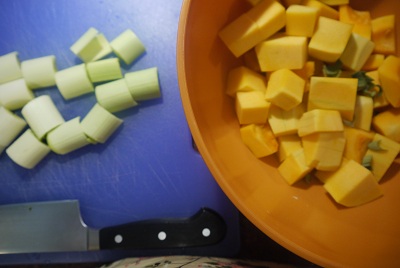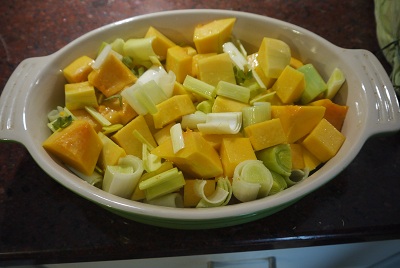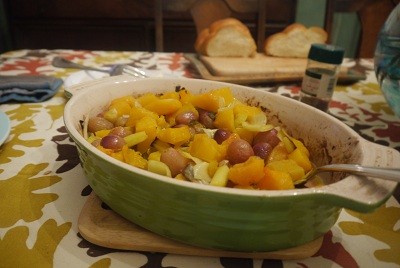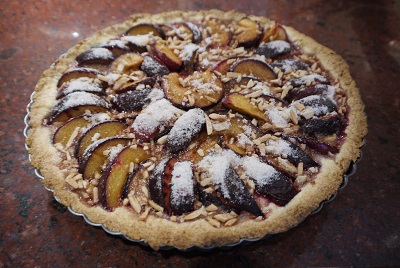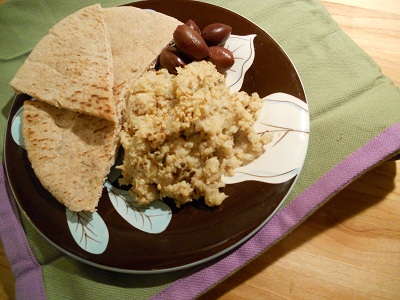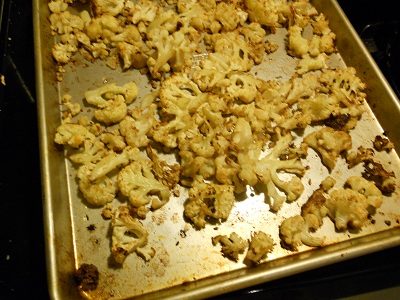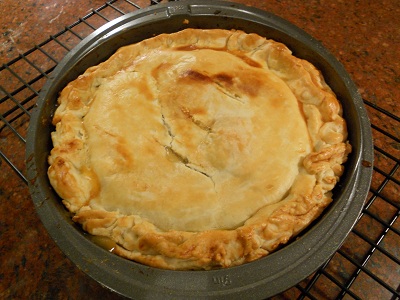Elijah the Prophet visits us on Passover, but Yotam Ottolenghi was at our table on Rosh Hashana. I already told you about the fish we had on first night from his cookbook Jerusalem. But I cracked open both Plenty and Plenty More for our vegetarian guests the second night.
I know I should be talking about the fresh corn polenta and eggplant because it’s September and both of those foods are pretty much perfect right now. But my guests and I both agree that it’s the roasted red onions with walnut salsa that needs to be talked about.
I’ve had my eye on this salad for as long as I’ve had this cookbook in my collection. Roasting the red onions until they’re golden on top and near translucent in the rings takes the bite out of them and renders them almost sweet. The arugula provides a nice contrast, and the goat cheese connects the two with its tang. And the walnut salsa. Oh, the walnut salsa.
Ottolenghi recipes are often pretty labor- and time-intensive, but not this one. Yes, the roasting of the onions will take about 40 minutes, give or take, but everything else comes together very quickly – you put the walnut salsa together while the onions roast to give them some time to get to know each other. I set the half cup of parsley in two rounds of cold water to clean it. As per usual, I only used about half a hot pepper, but how much you use is entirely up to you. Where it says to brush the onions with olive oil and sprinkle with salt and pepper, I just tossed everything in a large bowl and then lay them out on a baking pan covered in parchment paper.
I have a five pound bag of red onions, a 10 lb. bag of walnuts from Costco, a second log of goat cheese, two bunches of parsley, leftover arugula and the remaining half of hot red pepper. So, basically, I’m making this again for dinner tonight. I couldn’t forgive myself if I didn’t.
Red Onions with Walnut Salsa from Plenty More by Yotam Ottolenghi
Ingredients
4 medium red onions (1 1/3 lb/600 g)
1 ½ Tablespoons olive oil
1 cup/20 g arugula
½ cup/15 g small flat-leaf parsley leaves
2 oz/60 g soft goat cheese broken into 3/4-inch/2-cm chunks
Salt and black pepper
Salsa
2/3 cup/65 g walnuts, coarsely chopped
1 red chile, seeded and finely chopped (use your discretion)
1 clove garlic, crushed
3 Tablespoons red wine vinegar
1 Tablespoon olive oil
Salt
Directions
Preheat the oven to 425F/220C
Peel the onions and remove the tops and tails. Cut each crosswise into 3 slices, about 3/4-inch/2-cm thick, and place on a baking sheet. Brush the slices with the olive oil, sprinkle with ¼ teaspoon salt and some black pepper, and roast in the oven for about 40 minutes, until the onions are cooked and golden brown on top. If they haven’t taken on much color, place under a hot broiler for a few minutes. Set aside to cool slightly.
While the onions are cooking, put all of the salsa ingredients in a small bowl, add ¼ teaspoon salt, stir and set aside.
To serve, put the arugula and parsley in a large bowl. Add the warm onions, the cheese and half the salsa and toss carefully so the onions don’t fall apart. Divide among shallow plates, spoon the remaining salsa over the top, and serve.










